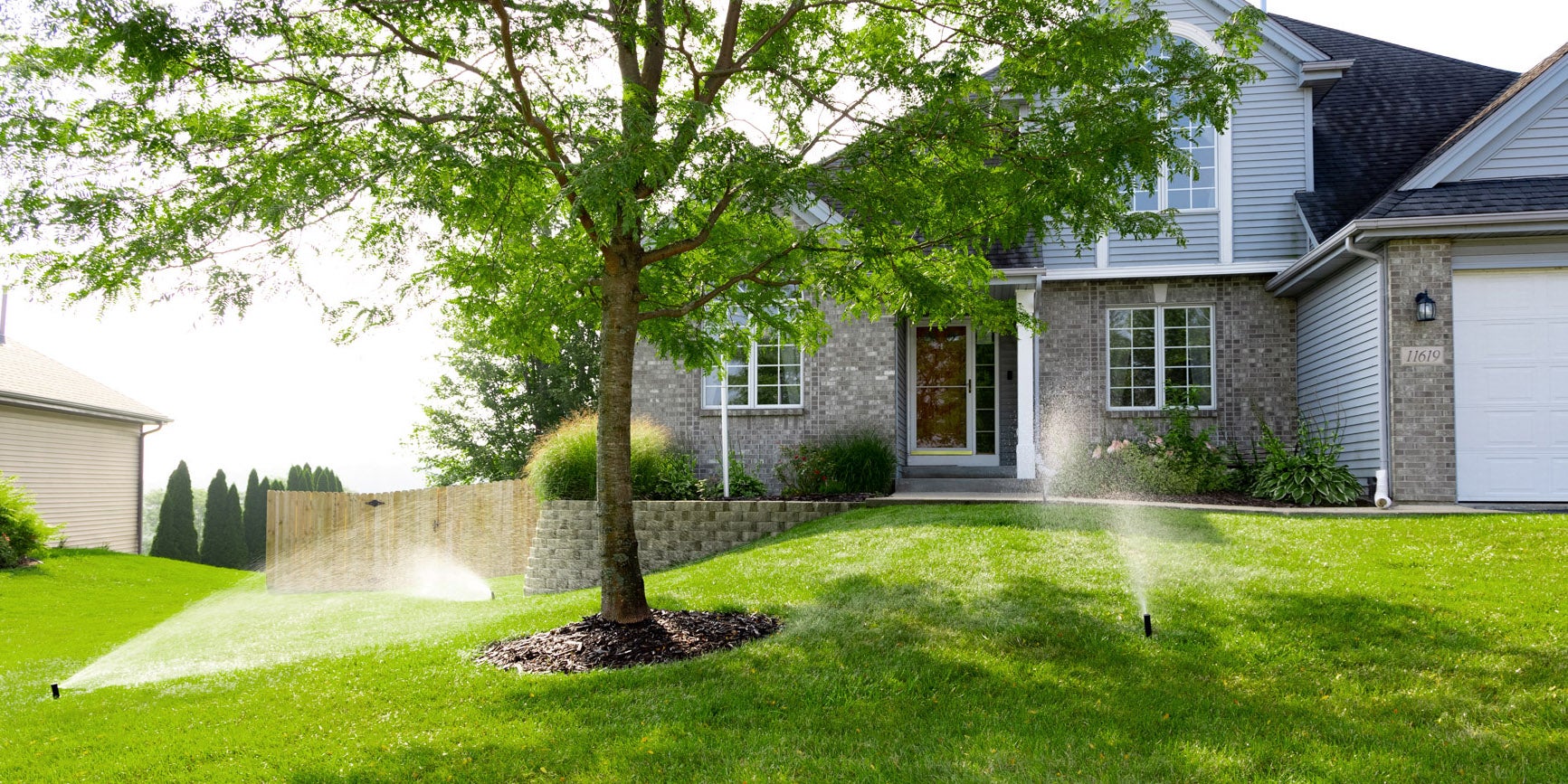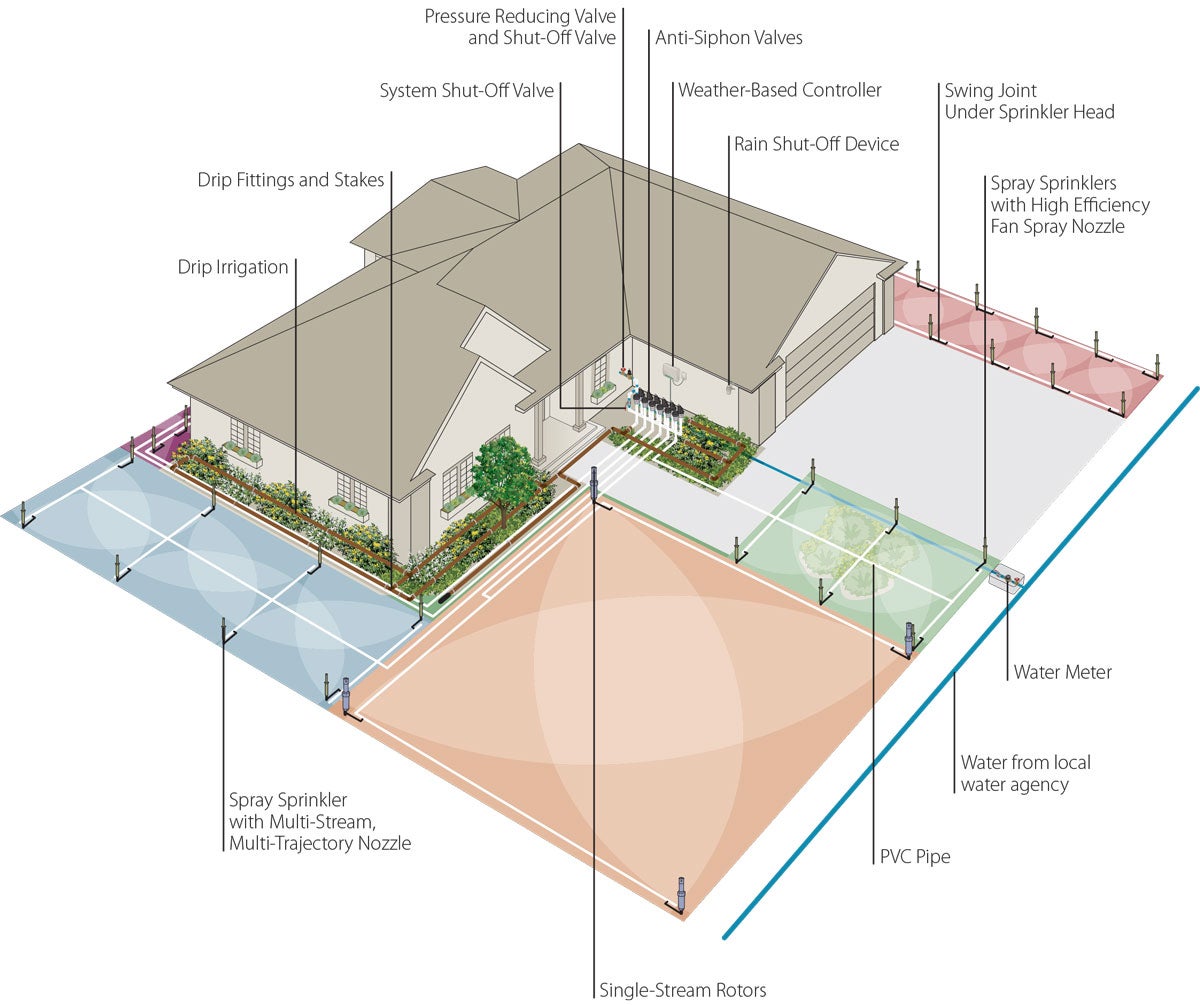Anatomy of an Automatic Sprinkler System

Keeping your lawn and garden healthy and beautiful can be tedious and time-consuming. An automatic sprinkler system lets you enjoy the convenience of having perfectly watered plants without the hassle of watering by hand. An automatic sprinkler system comprises several components that work together to deliver water where it needs to go for lawns and plants to thrive. This article will discuss how these components work together to form an efficient and effective watering system that saves precious time, money and water while providing your yard and garden with the perfect amount of moisture.
Overview of an Automatic Sprinkler System
You may only really think about your irrigation system if you wake up to the sight of sprinklers watering your lawn. After all, if it's working properly, your automatic sprinkler system should be a "set it and forget it" feature of your home. But have you ever considered how your sprinkler system works? Where does your water come from and how does it get to your home, and, ultimately, on your lawn?

Water may be delivered to your home from a municipal water supply or pumped from a well on your property. In most cases, the water for the homes in your neighborhood is delivered through a large-capacity water main.
From the water main, a smaller capacity supply line connects to your home, where a water meter is installed to record the number of gallons flowing through this pipe and into your home. Your irrigation system connects to the water supply in your home.
Next, a system shutoff valve is installed that allows you to turn off the water supply to your irrigation system without affecting the water supply to your home. This is needed, for example, when repairing a sprinkler system component under pressure or in case of an emergency.
Local building codes require a backflow prevention device to prevent accidental contamination by preventing irrigation water from draining into the main supply line. This can be a standalone backflow prevention device or valves with a built-in backflow prevention feature.
After the water flows through the backflow prevention device, it is held under pressure behind the sprinkler system valve. Then, the irrigation controller sends a low-voltage electrical signal to the valve, allowing water to flow through to the active zone, allowing the sprinkler heads to water your lawn. Then the controller turns off the active zone, cycles to the next zone, and repeats the process until your entire lawn has been watered.
How the Controller Automates your Sprinkler System
Except for the initial programming, the controller requires little to no attention. The controller, or timer, is the "brain" of your irrigation system, telling the valves when and how much water to release into each zone.
Controllers come in various sizes, from small residential types that typically control 4 to 12 zones, to large commercial systems that can monitor hundreds of zones. Some controllers are operated by a timer, while others are connected to a weather station or have moisture sensors installed in the soil. Modern "smart" controllers, like the Rain Bird ARC Series WiFi Smart Controller, make it easier to program and monitor your sprinkler system using an app on your smartphone.
No matter which type you choose, your controller is the central point for programming and controlling your irrigation system's functions.
Sprinklers and Nozzles: The Delivery System
The most visible components of your automatic sprinkler system are the sprinkler heads and nozzles that distribute the water to your lawn. But your landscape likely contains different types of plants, including lawn, trees, shrubs and flower beds, each requiring different amounts of water and methods of water delivery. When planning your irrigation system, it is essential to choose the most effective and efficient sprinkler components for the various plants in your landscaping.
Sprinkler heads come in a wide variety of shapes and sizes depending on the type of water delivery they provide. For instance, rotors spray with a gentle rain shower-like pattern perfect for large areas of lawn, while bubbler or drip emitters can be staked close to the root zone of plants, shrubs or trees that require frequent watering.
The water used for your automatic sprinkler system goes through many steps, from the time it's delivered to your home until it's sprayed onto your lawn. The convenience of an automatic sprinkler system saves you time while more efficiently delivering water exactly when and where it needs to go. To start planning your automated sprinkler system, check out Rain Bird’s Sprinkler Design Service and download our free design worksheet.
